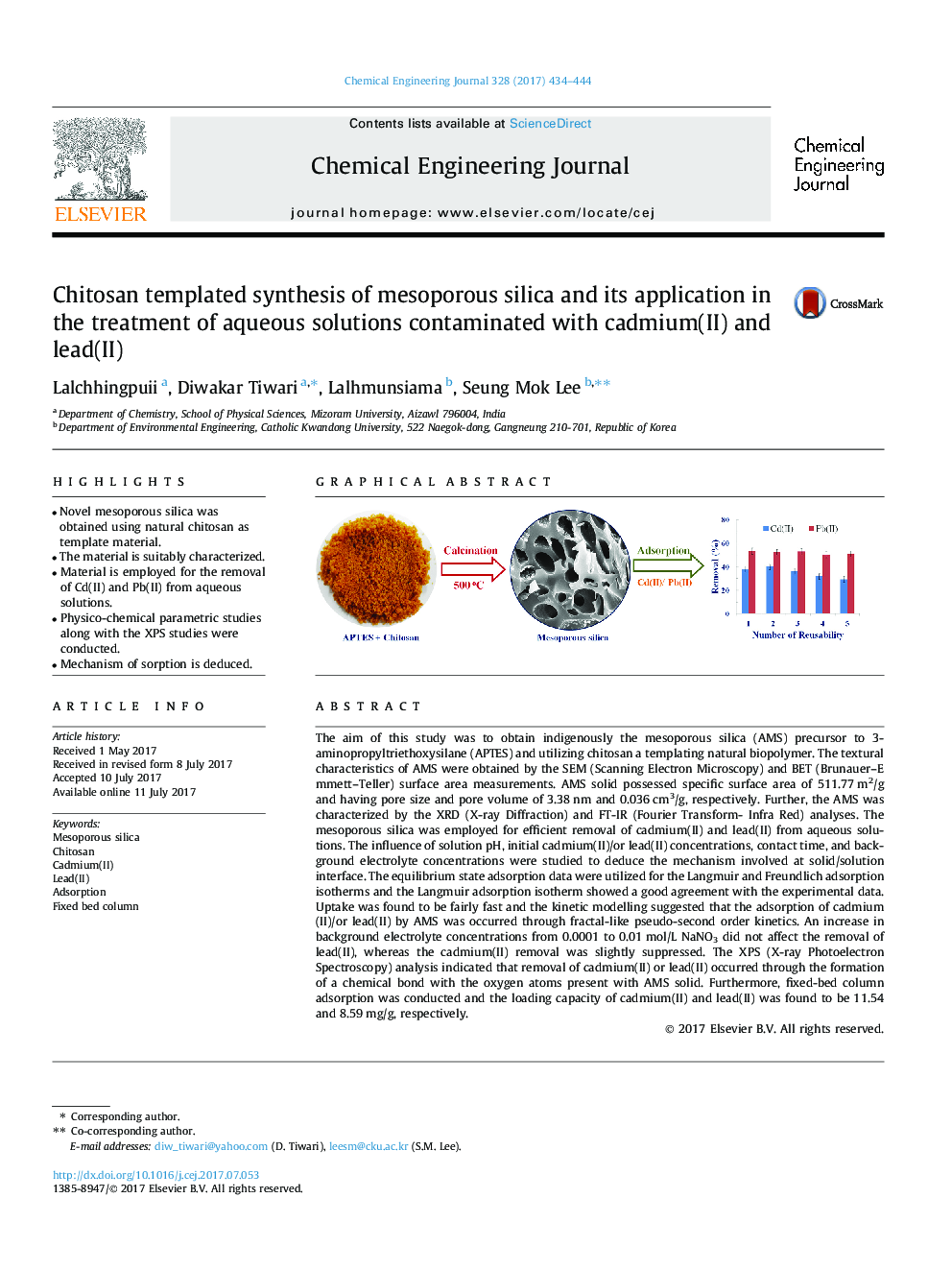| Article ID | Journal | Published Year | Pages | File Type |
|---|---|---|---|---|
| 6465247 | Chemical Engineering Journal | 2017 | 11 Pages |
â¢Novel mesoporous silica was obtained using natural chitosan as template material.â¢The material is suitably characterized.â¢Material is employed for the removal of Cd(II) and Pb(II) from aqueous solutions.â¢Physico-chemical parametric studies along with the XPS studies were conducted.â¢Mechanism of sorption is deduced.
The aim of this study was to obtain indigenously the mesoporous silica (AMS) precursor to 3-aminopropyltriethoxysilane (APTES) and utilizing chitosan a templating natural biopolymer. The textural characteristics of AMS were obtained by the SEM (Scanning Electron Microscopy) and BET (Brunauer-Emmett-Teller) surface area measurements. AMS solid possessed specific surface area of 511.77Â m2/g and having pore size and pore volume of 3.38Â nm and 0.036Â cm3/g, respectively. Further, the AMS was characterized by the XRD (X-ray Diffraction) and FT-IR (Fourier Transform- Infra Red) analyses. The mesoporous silica was employed for efficient removal of cadmium(II) and lead(II) from aqueous solutions. The influence of solution pH, initial cadmium(II)/or lead(II) concentrations, contact time, and background electrolyte concentrations were studied to deduce the mechanism involved at solid/solution interface. The equilibrium state adsorption data were utilized for the Langmuir and Freundlich adsorption isotherms and the Langmuir adsorption isotherm showed a good agreement with the experimental data. Uptake was found to be fairly fast and the kinetic modelling suggested that the adsorption of cadmium(II)/or lead(II) by AMS was occurred through fractal-like pseudo-second order kinetics. An increase in background electrolyte concentrations from 0.0001 to 0.01Â mol/L NaNO3 did not affect the removal of lead(II), whereas the cadmium(II) removal was slightly suppressed. The XPS (X-ray Photoelectron Spectroscopy) analysis indicated that removal of cadmium(II) or lead(II) occurred through the formation of a chemical bond with the oxygen atoms present with AMS solid. Furthermore, fixed-bed column adsorption was conducted and the loading capacity of cadmium(II) and lead(II) was found to be 11.54 and 8.59Â mg/g, respectively.
Graphical abstractDownload high-res image (85KB)Download full-size image
